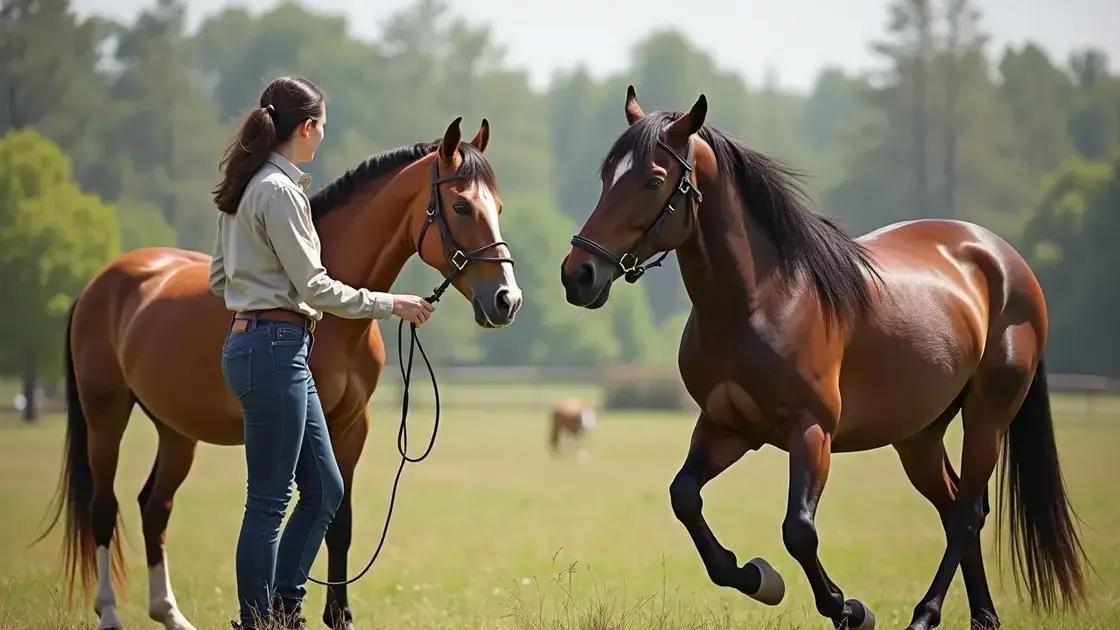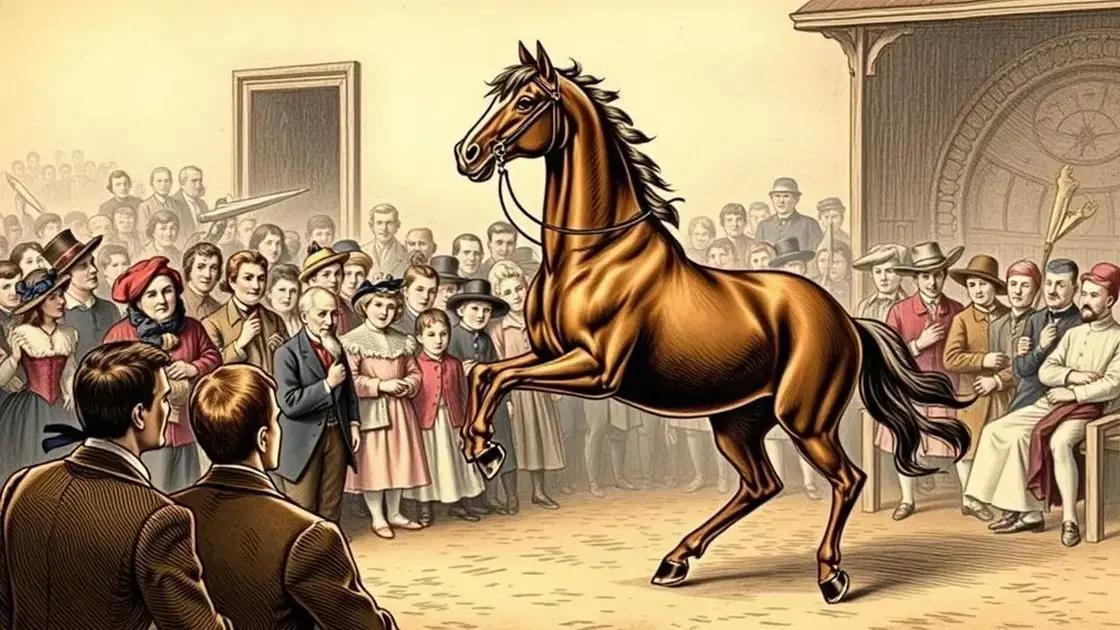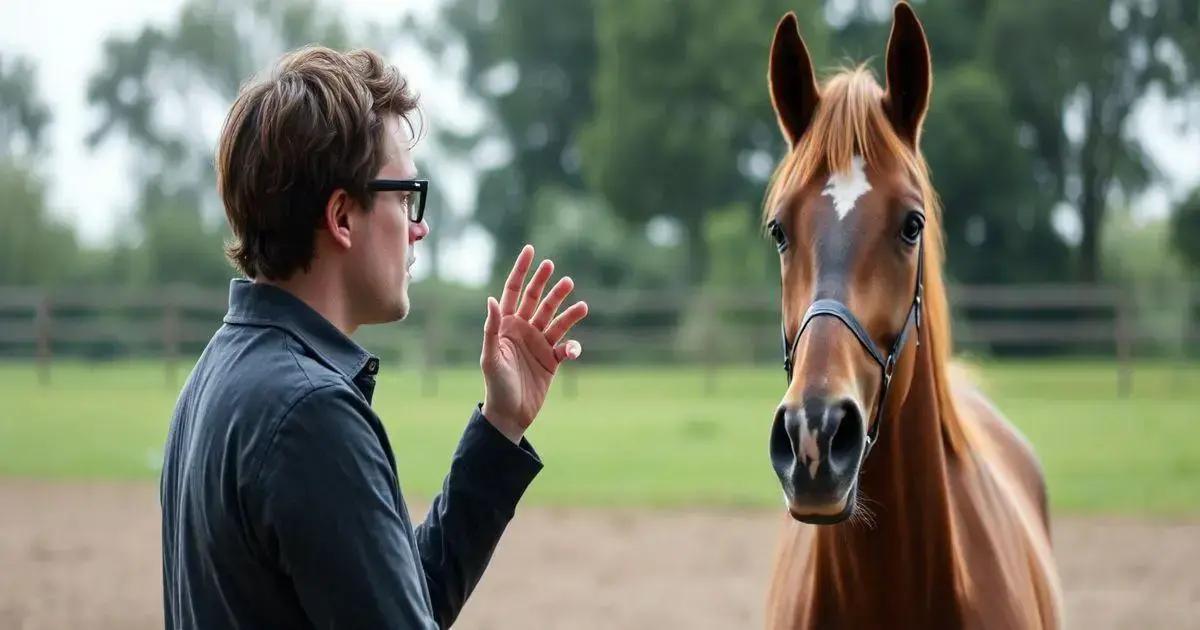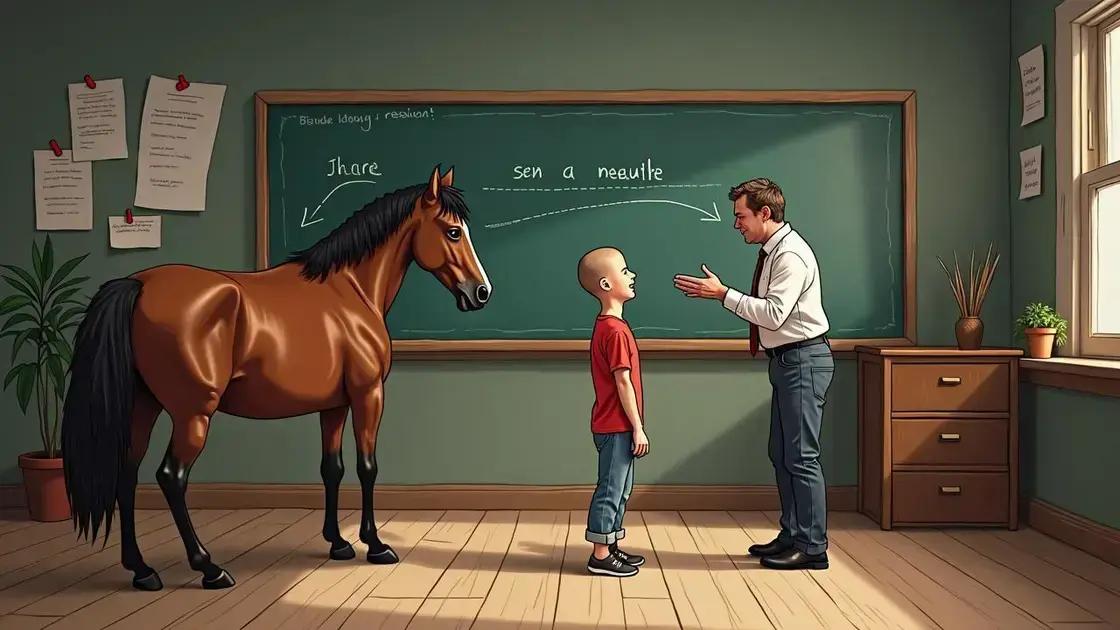The Horse Trick phenomenon refers to a horse’s apparent ability to answer questions and perform tasks, which is explained by learned behaviors and cues from trainers, rather than extraordinary intelligence. Scientific studies, especially those involving Clever Hans, reveal that horses respond to subtle signals rather than exhibiting independent reasoning.
The Horse Trick has intrigued audiences for years. But is there scientific evidence for the Horse Trick? Many have wondered whether this remarkable ability is real or merely an illusion. In this article, we will dive into the history of the Horse Trick, explore various scientific studies that examine its authenticity, and discuss the implications of our findings on understanding this fascinating phenomenon.
Understanding the Horse Trick Phenomenon

The Horse Trick phenomenon captivates audiences and sparks curiosity. It involves a horse seemingly demonstrating advanced reasoning or learning capabilities. This phenomenon has led many to question the extent of a horse’s intelligence. Understanding how the Horse Trick works is key to exploring the scientific evidence behind it.
The Basics of the Horse Trick
Essentially, the Horse Trick is when a horse appears to answer questions or perform tasks based on a set of clues given by its trainer. This is often showcased in various entertainment settings, leading people to believe that horses possess extraordinary cognitive abilities.
Behavioral Cues and Training
Many professionals emphasize that the success of the Horse Trick can significantly depend on behavioral cues. Trainers often train horses to respond to subtle signals that might go unnoticed by the audience. These cues can include shifts in body language or specific vocal commands that guide the horse’s actions.
Expectations vs. Reality
While it may seem like a horse has a unique understanding of complex tasks, scientific analysis often reveals that the reality is different. Horses frequently use associative learning to connect certain actions with rewards or patterns. The performance may not fully reflect a high level of intelligence but rather an impressive ability to learn through repetition.
Public Fascination
The allure of the Horse Trick is enriched by the public’s fascination with animal intelligence. This interest often overshadows the understanding of how animal learning really works. Social media and wildlife documentaries further enhance this fascination, making people more curious about what they can achieve with training.
Historical Background of the Horse Trick

The historical background of the Horse Trick is rich and fascinating. It dates back to the 19th century when horses began to be used in performances for entertainment. One of the most famous examples is Clever Hans, a horse that became very popular in the early 1900s. Clever Hans gained a reputation for answering questions correctly and performing tasks, which led many to believe he had extraordinary intelligence.
Clever Hans and Media Attention
Clever Hans was owned by a German math teacher named Wilhelm von Osten. Media attention grew as spectators flocked to see the horse perform. This phenomenon raised questions about animal intelligence and learning, prompting scientific scrutiny of the Horse Trick.
Scientific Interest
As Clever Hans became more famous, scientists, including psychologist Oskar Pfungst, began to investigate the phenomenon. Pfungst realized that the horse was responding to subtle cues from its trainer, rather than demonstrating higher reasoning skills. This significant finding turned the public’s perception of animal intelligence upside down.
Evolution of the Horse Trick
Over the decades, the Horse Trick has evolved into various forms of entertainment. From circuses to television shows, horses continue to dazzle audiences worldwide. Despite scientific explanations, the mystery and allure surrounding these performances persist, continuing to engage viewers’ imaginations.
Scientific Studies Examining the Horse Trick

Scientific studies examining the Horse Trick provide insight into how these remarkable performances work. Most notable is the research conducted by psychologist Oskar Pfungst in the early 1900s. He sought to understand Clever Hans’s abilities and his surprising knack for answering questions posed by his owner.
Pfungst’s Investigation
Pfungst’s investigation revealed that Clever Hans was not performing based on intelligence but responding to unintentional cues from his trainer. This pivotal study showed that animals can pick up on subtle body language and signals that humans might not even realize they are giving.
Subsequent Research
After Pfungst, many studies followed. Researchers aimed to identify the principles behind the Horse Trick behavior. For example, studies explored how horses learn through associative learning, where they make connections between actions and rewards.
Research Findings
Additionally, scientists have examined how environmental factors impact horse behavior. Factors such as audience presence and anxiety levels can affect a horse’s performance. Understanding these dynamics helps clarify the extent of the horse’s training and its capability to learn.
Implications of Findings
The findings from these scientific studies have significant implications for training methods and public perception of animal intelligence. While horses can train successfully, they rely heavily on the cues given by their handlers rather than independent reasoning.
Implications and Conclusions on the Horse Trick

The implications and conclusions on the Horse Trick are crucial for understanding animal behavior and intelligence. Recognizing that horses rely on training and cues rather than inherent reasoning skills reshapes how we view interactions between humans and animals. This understanding can influence training methods used by horse trainers and animal behaviorists.
Influence on Training Methods
Knowing that horses respond to cues can help trainers enhance their techniques. By using clearer signals and rewarding desired behaviors, trainers can achieve better performance from their horses. This evidence encourages positive reinforcement as a preferred method over intimidation or punishment.
Public Awareness and Perception
As scientific studies continue to illustrate the mechanics behind the Horse Trick, public perception may also shift. Understanding that these performances are based on learned behaviors can promote a deeper appreciation for animal training rather than a belief in extraordinary intelligence.
Research Opportunities
The exploration of the Horse Trick opens doors for future research into animal cognition. Scientists can investigate how different species learn and communicate, leading to a broader understanding of animal intelligence. This could improve welfare practices for horses and other animals in performance settings.
Broader Context
Finally, insights from the Horse Trick have broader implications within the field of psychology and animal studies. They serve as a reminder of the importance of rigorous scientific inquiry to separate fact from myth and ensure that both animal and human behaviors are understood accurately.
Understanding the Truth Behind the Horse Trick
The exploration of the Horse Trick phenomenon has revealed vital insights into animal behavior and intelligence. Scientific studies have demonstrated that horses, while capable of remarkable performances, rely heavily on learned behaviors and cues from their trainers.
This understanding has significant implications for how we train and interact with animals. By emphasizing positive reinforcement and clear communication, trainers can enhance the relationship with their horses, leading to better outcomes for both parties.
Moreover, this inquiry into animal cognition encourages a critical examination of public perceptions regarding animal intelligence. As we uncover the truths behind these performances, we can foster deeper appreciation and respect for the intelligence of all animals.
In summary, the scientific investigation into the Horse Trick not only impacts training methods but also paves the way for future research within animal studies, ultimately enriching our understanding of the animal kingdom.
FAQ – Frequently Asked Questions about the Horse Trick
What is the Horse Trick phenomenon?
The Horse Trick phenomenon involves a horse seemingly answering questions or performing tasks based on cues given by its trainer.
Is there scientific evidence supporting the abilities shown in the Horse Trick?
Yes, scientific studies have shown that horses rely on learned behaviors and cues from their trainers rather than exhibiting extraordinary intelligence.
Who is Clever Hans and why is he significant?
Clever Hans was a famous horse in the early 1900s known for supposedly answering questions correctly. His case led to important research into animal behavior.
How do trainers effectively teach horses to perform tricks?
Trainers use positive reinforcement, clear signals, and repetition to help horses learn and perform various tasks.
What are the implications of understanding the Horse Trick?
Understanding the Horse Trick helps improve animal training methods, enhances public perceptions of animal intelligence, and opens avenues for further research in animal cognition.
Can horses understand human body language?
Yes, horses are skilled at picking up subtle cues from human body language, which influences how they respond during training.












